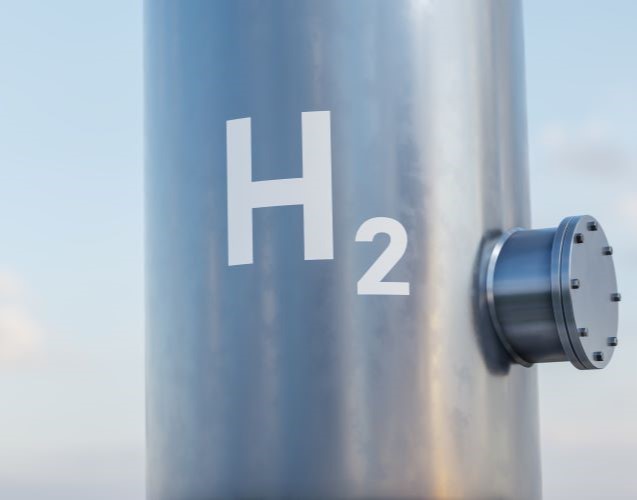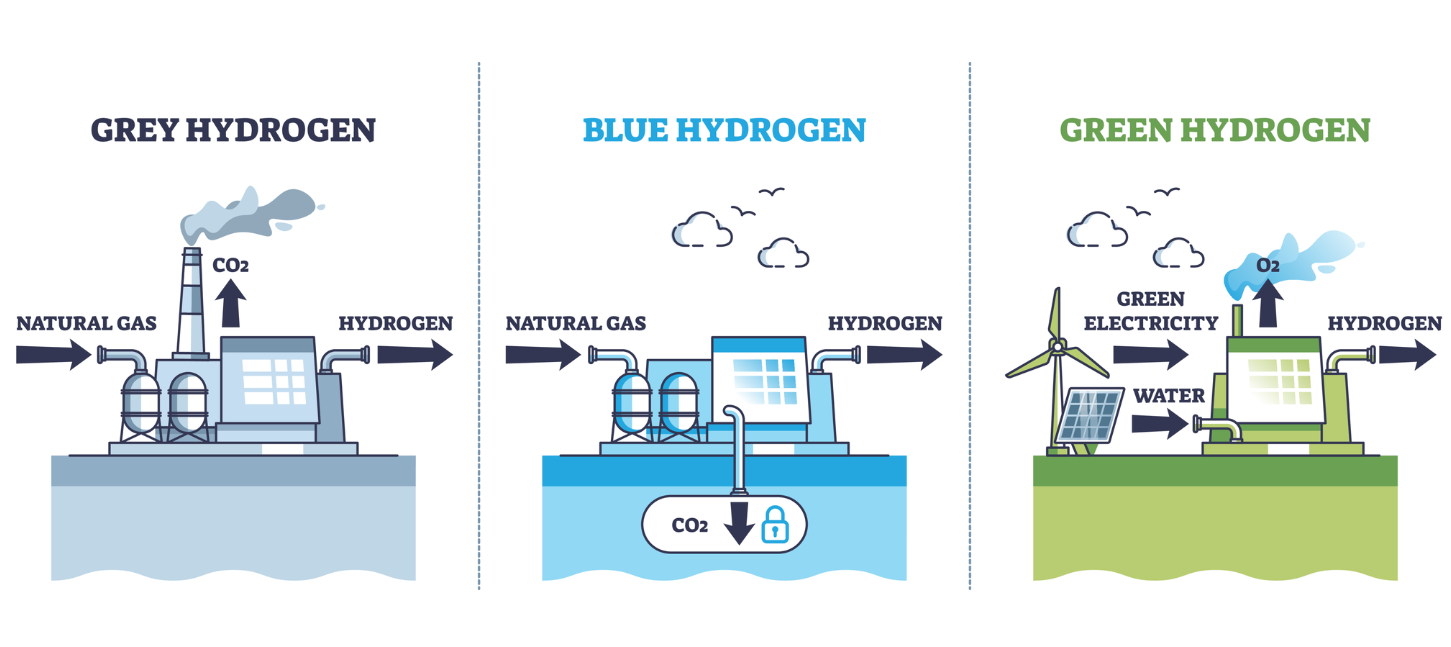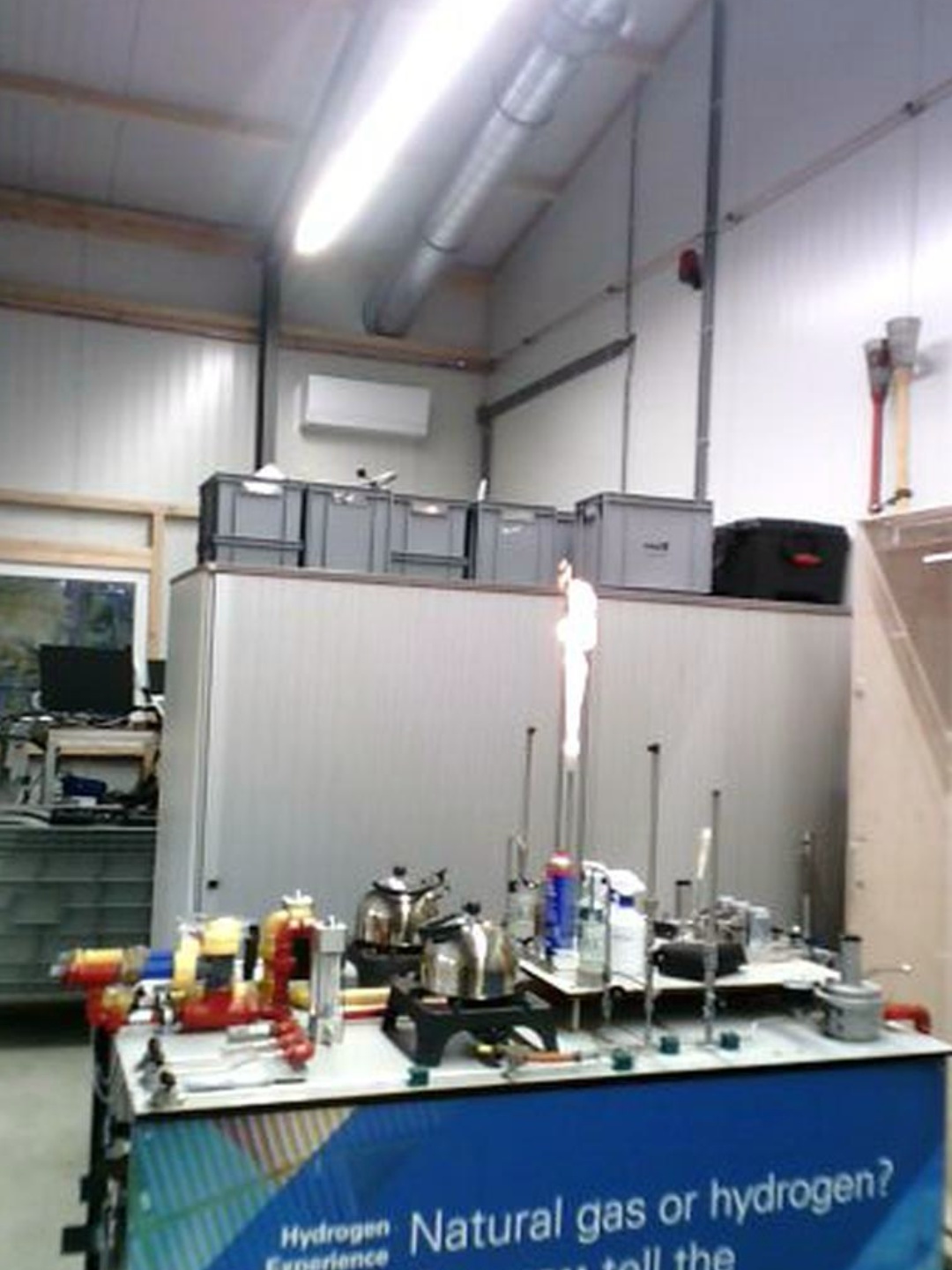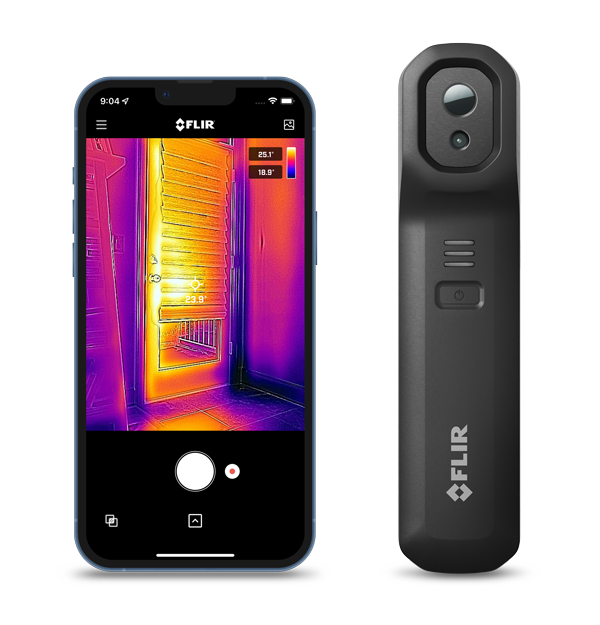Thermal Imaging for Hydrogen Flame Detection and Monitoring

Visualize ‘invisible’ hydrogen flames, improve situational awareness, and keep technical staff safe.
Renewable hydrogen is set to play a crucial role in the energy transition. European member states are already experimenting with this promising energy carrier, and they are testing how they can repurpose existing natural gas distribution networks to bring hydrogen to the consumer. Hydrogen is a highly flammable gas. That is why technical staff working on these hydrogen distribution networks will need to be trained for safety. They will also need to be equipped with the right tools to detect hydrogen leaks and see hydrogen flames in time. One such tool is the thermal imaging camera.
Hydrogen is enjoying renewed and growing attention around the world. In Europe for example, hydrogen is considered as a key priority to achieve the European Green Deal and Europe’s clean energy transition. It can be used as a feedstock, a fuel or an energy carrier and storage, and has many possible applications across the industry, transport and power sectors. Hydrogen is also an interesting alternative for heating old or historic buildings, which are typically difficult to insulate, and as a result, where all-electric heat pumps are not practical.

Unlike other renewable energies, hydrogen has the potential for being stored in large quantities for later use.
Green Energy
Although hydrogen is seen as a clean energy carrier, it is not always produced in a clean way. There are several ways to create it. Gray hydrogen is produced from fossil fuels (methane) through a process called steam reforming and results in the emission of carbon dioxide (CO 2). Blue hydrogen also relies on this principle, although 80% to 90% of the emitted CO 2 during the process is captured and stored underground. As the name suggests, green hydrogen is the most environmentally friendly way to produce hydrogen. This is done through electrolysis, which means using renewable electricity to split water into hydrogen and oxygen.
This is where hydrogen becomes interesting, from an environmental and climate standpoint. When produced at times when solar and wind energy resources are abundantly available, renewable “green hydrogen” can support the world’s electricity needs, providing long-term and large-scale storage. The storage potential of hydrogen is particularly beneficial for power grids, because it allows for renewable energy to be kept not only in large quantities but also for long periods of time.
Distributing to the Consumer
With all its potential for green energy, the question remains how hydrogen, once produced, can be efficiently delivered to the consumer or to the point of use in large quantities. Until now, the market has been discouraged by the substantial expenses that are associated with establishing a dedicated hydrogen pipeline or delivery infrastructure.
Another option that has been gaining more attention in recent years is converting the existing natural gas distribution network for the passage of hydrogen. Obviously, hydrogen and natural gas have different characteristics – for example in terms of flammability, density, and ease of dispersion – but with the infrastructure for natural gas already in place, a conversion for hydrogen distribution could be economically interesting.
Several demonstration projects and proofs of concept across Europe have already demonstrated that with a few adjustments, hydrogen can be injected into existing natural gas pipelines and delivered to a wide range of end-point applications.
- In 2020, a pilot hydrogen project went operational in the UK. The HyDeploy demonstration showed that it was possible to blend up to 20% of hydrogen with normal gas supply into Keele University’s private gas network, which serves 17 faculty buildings and 100 domestic properties.
- Also in the UK, a feasibility study - the H21 Leeds City Gate report – was carried out, confirming that conversion of the UK gas network to 100% hydrogen was both technically possible and could be delivered at a realistic cost.
- Another pilot project started in 2022, in Lochem’s Berkeloord district (the Netherlands). There, twelve homes are heated using hydrogen transported over the existing natural gas grid.
- In Hoogeveen, the Netherlands, the development of the world’s first hydrogen district was planned for 2023.
These projects must demonstrate that hydrogen is a safe, comfortable and affordable alternative to natural gas. At the time of writing, many more demonstration and pilot projects are being developed, which shows the growing interest in the development of hydrogen distribution networks.


A test set-up with natural gas and hydrogen flares: with a visual camera, the hydrogen flares are not or hardly visible. However, a thermal imaging camera can visualize them based on the thermal radiation the hydrogen flares emit.
Properties of Hydrogen
Hydrogen (H) is a gaseous substance that is the simplest member of the family of chemical elements. Under ordinary conditions, hydrogen gas is a loose aggregation of hydrogen molecules, each consisting of a pair of atoms, a diatomic molecule, H2.
- Availability: hydrogen is the most abundant element in the universe but only makes up only about 0.14 percent of Earth’s crust by weight.
- Diffusivity: hydrogen’s greatest advantage, in terms of safety, is its ability to diffuse through the air much faster than other gaseous fuels, making it less likely to accumulate.
- Toxicity: colorless, odorless, tasteless, and non-toxic.
- Flammability: hydrogen is a highly flammable gas. Its broad flammability limits and low ignition energy increase risk.
- Visibility: Unlike methane and gasoline fires, hydrogen burns with a nearly invisible flame in daylight. However, contaminants in the air can create some visibility.
Pipe Works and Flaring
Now we know that existing infrastructure can be used: how can existing gas distribution pipelines be safely decommissioned as a natural gas pipeline and (simultaneously) commissioned as a hydrogen pipeline during the conversion to a hydrogen network?
From a practical standpoint, the distribution pipes will need to be purged. Natural gas will need be let out and hydrogen gas will need to be let in. Research has shown that hydrogen can be used to displace natural gas from existing natural gas pipelines, and that a natural gas distribution pipeline can immediately be recommissioned as a hydrogen distribution pipeline after the natural gas has been displaced.
One frequently used technique when purging pipes is flaring. This is a safety measure often employed in industrial settings where hydrogen is used. The process involves burning off excess hydrogen in a controlled manner. Hydrogen flaring is typically done during maintenance, leak detection, or other situations where there is excess hydrogen that cannot be safely stored or disposed of in a controlled way.
Although hydrogen is not toxic, there are specific hazards associated with working with hydrogen gas, and flaring it poses certain risks. Just like many other gases, hydrogen is highly flammable and can ignite rapidly in the presence of oxygen. Maintenance workers should therefore wear protective clothing that can withstand the heat and be aware of temperature conditions to avoid burns. Maintenance workers should also use tools that are intrinsically safe to avoid spark discharge accidents.
Conventional Ways to Detect Hydrogen Flames
To safely work with hydrogen, technical staff needs to be trained and they need to use the appropriate tools. One of the difficulties when working with hydrogen during flaring activities is that a hydrogen flame is not always visible. Hydrogen is also very light and – since flaring is done in open air – technical workers always need to be on guard for unexpected flame movements due to wind bursts.
To ensure safety, technical staff need a better view of the flame during flaring works. Some of the most frequently used technologies to monitor hydrogen flares are thermocouples, ultraviolet (UV) sensors and infrared (IR) sensors. Sometimes, certain contaminants like water or dust are added to the hydrogen, which makes the flame more visible.
Thermal Imaging for Hydrogen Flame Detection
Although all above-mentioned technologies are valuable to detect hydrogen fast and accurately, they are missing one essential feature: they do not allow to actually see a hydrogen flame. That is why thermal imaging cameras are the ideal complementary tool. Although hydrogen flames are invisible during daylight, they do emit thermal radiation. Thermal cameras can detect these temperature changes, allowing technical staff to visualize the exact movement of the flames and safely approach a hydrogen flame.
Thermal imaging cameras are an indispensable tool for anyone working on hydrogen pipelines or monitoring hydrogen flares. Here’s why:
- Improved situational awareness: Thermal imaging cameras provide a visual representation of the entire scene, including the hydrogen flare installation. This offers improved situational awareness, which can be particularly useful in industrial settings where multiple processes are ongoing.
- Improved staff safety: Thermal cameras allow technical staff to monitor flames from a safe distance. They don’t have to approach the flame closely, and the detection sensors inside a thermal camera do not need to make physical contact with the flame.
- Multiple uses: Thermal imaging cameras have a broad range of applications, beyond flame detection. They can be used for electrical inspections, mechanical inspections, and more. This versatility makes them a very economical tool for a range of maintenance and safety tasks.
- Seeing temperature differences: Thermal imaging cameras enable maintenance workers to visualize subtle temperature differences. This enables them to detect not only flames, but also hotspots, overheating problems, and other potential issues related to possible equipment malfunctions.
- Fewer false alarms: Unlike flame detectors in certain environments, thermal imaging cameras are less prone to false alarms caused by nonflame sources such as sunlight, welding arcs, or hot surfaces.
Handheld Hydrogen Detection Solutions from FLIR
Thermal and acoustic cameras from FLIR support technical maintenance professionals in safely working in hydrogen environments. FLIR cameras provide users with detail-rich thermal images in a variety of thermal color palettes enabling greater situational awareness and understanding. Some of the most suitable camera solutions for hydrogen flame monitoring include:
FLIR ONE® Edge Series Thermal Cameras with Wireless Connectivity
FLIR Cx-Series Compact Thermal Cameras

FLIR Cx5 Hazardous LocationRated Thermal Camera

FLIR Ex Pro-Series Infrared Cameras with Ignite™ Cloud

FLIR K-Series High-Performance TIC for Firefighting

In addition, the following technology allows inspectors to detect gas leaks, either by visualizing an added tracer gas (CO2) or by visualizing the sound of a leak.
FLIR G343 Optical Gas Imaging (OGI) Camera for CO2




